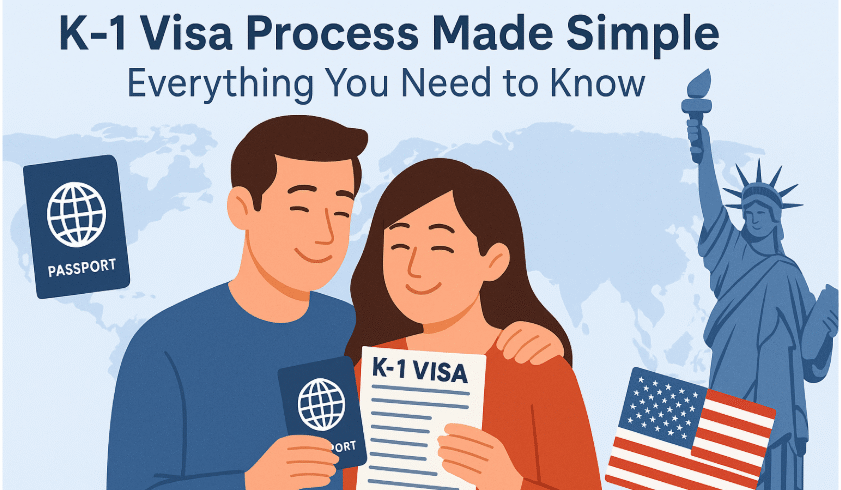
Examining the Intersection of Trump Immigration Policies and the Ongoing Debate on US Immigration Reform.
Between 2017 and 2021, the Trump administration introduced sweeping changes that reshaped nearly every corner of the U.S. immigration policy system. Guided by an “America First” approach, these policies aimed to reduce both legal and illegal immigration, heighten enforcement, and overhaul the asylum process, impacting U.S. immigration policy.
The effects were far-reaching—impacting individuals, families, businesses, and immigration law itself. In this article, we break down the most significant changes in immigration policy under Trump, offering insight into their implementation, legal challenges, and lasting consequences.
These changes in immigration policy have played a crucial role in defining the current landscape of immigration law and enforcement in the United States.
A thorough examination of immigration policy reveals the significant implications these changes have for families and individuals.
Understanding the sweeping impact of Trump’s immigration policies: US Immigration
This immigration policy shift reverberated through various communities, changing the dynamics of immigrant experiences.
Such immigration policy decisions have sparked dialogue on the balance between national security and immigration rights.
Travel Bans and National Origin Restrictions
These drastic changes in immigration policy reflected a shift in how the U.S. viewed its role in the global refugee crisis
As the U.S. immigration policy evolved, the humanitarian principles guiding refugee admissions faced significant challenges.
One of the Trump administration’s earliest and most controversial moves was Executive Order 13769, widely known as the “Muslim Ban.” It initially barred entry from several Muslim-majority countries, sparking legal battles and public outcry. Although challenged in court, a revised version of the policy was ultimately upheld by the Supreme Court in 2018.
The ban marked a clear shift toward national origin-based restrictions, laying the groundwork for tighter vetting and expanded travel bans that eventually included non-Muslim-majority countries as well. These restrictions deeply impacted families, students, and professionals from targeted nations—and ignited a global debate on national security vs. human rights.
Drastic Cuts to Refugee Admissions
This shift in immigration policy had the effect of reinforcing barriers to legal status and benefits for many immigrants.
The Trump administration slashed the U.S. refugee admissions ceiling to historic lows, reducing the annual cap from 110,000 under President Obama to just 15,000 by FY 2021. Citing security and domestic priorities, the administration justified the cuts as necessary for vetting and resettlement reform.
However, critics argued this shift undermined America’s humanitarian leadership and left thousands of displaced individuals without refuge. The administration also downsized refugee resettlement infrastructure, making it harder to rebuild admissions capacity in future years.
Furthermore, changes in immigration policy directly correlated with increased scrutiny and restrictions on asylum claims.
As the immigration policy landscape evolved under these new regulations, vulnerable populations faced unprecedented hurdles.
The impact was both immediate and lasting—reducing protection for vulnerable populations and reshaping U.S. global refugee policy.
Expansion of the Public Charge Rule
This escalation in immigration policy enforcement raised issues of civil rights and due process for those affected.
The Trump administration broadened the definition of “public charge,” making it more difficult for immigrants to obtain green cards if they had used—or were deemed likely to use—public benefits like Medicaid, SNAP, or housing assistance.
This policy shift created widespread fear and confusion, leading many immigrants to avoid benefits they were legally entitled to. Although the rule was later blocked and reversed under the Biden administration, its chilling effect endured, discouraging benefit use and reshaping public perceptions around government assistance and immigration eligibility.
The expanded rule marked a turning point in how financial self-sufficiency was weighed in immigration decisions.
The immigration policy concerning DACA has instilled anxiety among many undocumented immigrants who were brought to the U.S. as children.
Heightened Restrictions on Asylum Access
The Trump administration implemented sweeping policies to limit asylum eligibility and access. Key changes included the Migrant Protection Protocols (MPP)—better known as “Remain in Mexico”—which forced asylum seekers to wait outside the U.S. while their cases were processed. Additionally, third-country transit bans barred applicants who hadn’t first sought asylum in another country en route.
New regulations also narrowed the definition of asylum, excluding many victims of domestic violence or gang-related persecution. These measures led to unsafe, overcrowded border camps, strained the asylum system, and drew sharp criticism from human rights advocates and legal aid groups.
Adjustments to immigration policy have led to significant delays and barriers for those seeking legal paths to immigration.
The result: fewer protections for vulnerable populations and increased pressure on already overburdened immigration courts.
Escalated Immigration Enforcement and ICE Raids
The Trump administration significantly expanded interior immigration enforcement, giving ICE broader authority to arrest and detain individuals—regardless of criminal history. By eliminating previous enforcement priorities, virtually any undocumented immigrant became a potential target.
The ongoing modifications to immigration policy continue to impact those seeking Temporary Protected Status.
This policy shift led to high-profile workplace raids, increased community surveillance, and widespread fear across immigrant populations. Detention capacity was also ramped up, with many immigrants held in remote facilities where access to legal representation was severely limited.
The aggressive enforcement approach triggered legal challenges, overwhelmed immigration courts, and complicated due process for those facing deportation.
This evolution in immigration policy has left a significant mark on the future of immigration in the United States.
DACA Under Threat: Uncertainty for Dreamers
The Deferred Action for Childhood Arrivals (DACA) program—offering protection to undocumented immigrants brought to the U.S. as children—was a central target of the Trump administration. In 2017, officials moved to terminate DACA, sparking prolonged legal battles.
In 2020, the Supreme Court blocked the rescission on procedural grounds, but the decision left the door open for future attempts to end the program. This legal tug-of-war created deep uncertainty for DACA recipients, jeopardizing their jobs, education, and stability.
The ongoing assault on DACA symbolized a broader strategy to restrict even established legal protections for immigrants.
Slowed Legal Immigration and Processing Delays
The Trump administration implemented policies that significantly slowed legal immigration, even without changing quotas. Visa petitions faced increased scrutiny, higher denial rates, and longer processing times—especially for employment-based categories.
The “Buy American, Hire American” executive order tightened H-1B requirements, making it harder for U.S. employers to hire skilled foreign workers. Meanwhile, COVID-19 intensified delays with embassy closures and temporary bans on several visa categories.
The result: a de facto reduction in legal immigration, impacting U.S. businesses, universities, and families seeking to reunite or retain talent.
Rollbacks of Temporary Protected Status (TPS)
Temporary Protected Status (TPS) shields individuals from deportation if their home countries are experiencing crises like conflict or natural disaster. The Trump administration moved to terminate TPS for several countries, including El Salvador, Haiti, and Nicaragua, claiming conditions had improved.
Although court rulings delayed these efforts, the policy shift created widespread fear and legal limbo for hundreds of thousands of long-term U.S. residents. Critics called the move politically driven and blind to ongoing instability in affected regions.
These rollbacks reflected a broader effort to scale back humanitarian protections in U.S. immigration policy.
Lasting Legacy and Legal Reversals
As the Biden administration took office, it faced the challenge of dismantling or revising many Trump-era immigration policies. While high-profile actions like the travel ban were swiftly reversed, others—such as asylum restrictions and the public charge rule—required complex legal rollbacks.
The Trump administration’s immigration agenda left a lasting imprint on U.S. policy and public discourse, reshaping how immigration is governed and debated. For immigrants, legal professionals, and policymakers, understanding this legacy is essential in navigating today’s evolving legal landscape.
Even beyond Trump’s term, these changes continue to influence policy decisions and court battles, underscoring their long-term impact.




